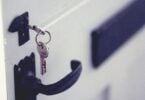Shortly after audiologists at St. Paul’s Hospital activated his cochlear implant in June, Gordon Peters phoned home.
“Hi girl,” he said to his 35-year-old daughter Serena. “I broke down crying,” she says. “He hadn’t said that to me in that tone since I was a teenager and he had full hearing.”

Gordon’s hearing had been bad for many years and was getting worse, says Serena, whose family is part of the Seabird Island First Nation near Agassiz, BC.
She believes her father’s years working in the noisy logging business were taking their toll, combined with ear injuries he suffered at the Indian day school he attended on the island, where staff would pull his ears as punishment.
As his hearing diminished, Gordon, 62, went through countless hearing aids. Several years ago, while using what would be his last set, he suffered an illness that caused his ears to feel clogged.
That was the tipping point into “profound sensorineural hearing loss” – in other words, complete hearing loss. Many other parts of his well-being suffered. His speech was affected and his balance was thrown off.
St. Paul’s is BC and Yukon’s cochlear implant centre
The family and Gordon’s doctor had been anticipating this moment and they had a plan: When he lost all hearing, he would go to St. Paul’s BC Adult Cochlear Implant Program.

It is the centre for all adult cochlear implant procedures in BC and Yukon. St. Paul’s established the first cochlear implant program in Canada in 1982. The first implant was performed and activated that same year. Today, the program serves 881 patients and once they receive an implant, they stay with it for as long as they are BC/Yukon residents.
On March 3, St. Paul’s otolaryngologist Dr. Jane Lea inserted the tiny electrode array of the implant into the cochlea of Gordon’s right ear. The cochlea is the snail-shaped part of the inner ear that is vital for hearing.
Switch-on changes the family’s life
On June 29, Gordon was fitted with the sound processor, the external portion of the cochlear implant that captures sound and sends signals to the electrode array in the cochlea. The “switch-on,” or activation of the cochlear implant, is done several weeks after surgery to allow the incision to heal.In Gordon’s case, COVID-19 delayed the date of the switch-on as the hospital dealt with a backlog of services that had been put on hold.
Gordon’s “switch-on,” carried out by St. Paul’s Registered Audiologist Glynnis Tidball, was an emotional day that would transform the lives of the Peters family.
“We’re so grateful, we all cried,” says Gordon’s wife Darlene. “I tried not to get my hopes up too high about the surgery, but it was like Christmas.”
Hearing loss is isolating
Heather Southam is also a Registered Audiologist at St. Paul’s and coordinator of its Cochlear Implant Program. She acknowledges how difficult hearing loss is for individuals and their families. “Life with hearing loss can be very lonely. Most people (with hearing loss) say it’s very frustrating because they’re cut off from the world.”
Tidball adds to that, saying the world isn’t kind to people with hearing loss. “It’s noisy, there’s sparse awareness and adoption of technology that can help overcome hearing loss, and most people don’t know how to modify communication to make it easier for those struggling with hearing loss.”
COVID-19 causes more challenges, she adds, with people standing farther away from each other and wearing masks that muffle sound and obscure vital visual cues that people need to lip read.
Paper in every room

At his worst points, Gordon had to communicate with his family by writing things down. There were pieces of paper in every room in his house. He compensated by learning to lip read. The family had to do a lot of adjusting.
Now the adjustments are positive. “He’ll be talking to me,” says Serena, “and I’m thinking, ‘that’s strange; he’s talking to himself.’”
Gordon is arguably the most delighted. “I couldn’t hear anything before. Now I can hear cars from way down the road now. I can hear my daughter talk to my wife.” Each day as he gets used to the device, he can hear more clearly.
And he can listen to his 13-year-old grandson Darryl’s music, something the teen describes as “awesome.” The family thought Gordon would never hear his grandson’s music again.
Carving out a thank you
The Peters family is so thankful that Serena and Gordon made a gift for the St. Paul’s team, a carving with words of gratitude, signed with the family’s traditional names. Says Serena: “The people at St. Paul’s completely changed our lives.”


“I was so touched when Darlene and Gordon presented us with the plaque,” says Tidball. “Gordon’s story is a wonderful example of how a cochlear implant can benefit not just the recipient but also their family and community. The plaque is a beautiful testament to this, and to the privilege our whole team feels by being a part of our patients’ journey back to hearing.”






This is from Gord’s brother Reid Peters.
“To all; a very heart warming story. Thanks to today’s medical break-through sound as we know it opens up a whole new world for brother Gord. This medical break- through is so impressive giving my brother functional ears which we take for granted. It is evident that his new lease on life will bring many years of thankful stories about his newly found hearing , thanks to St Paul’s Audiology Team.”
Thank you so much for your kind words!